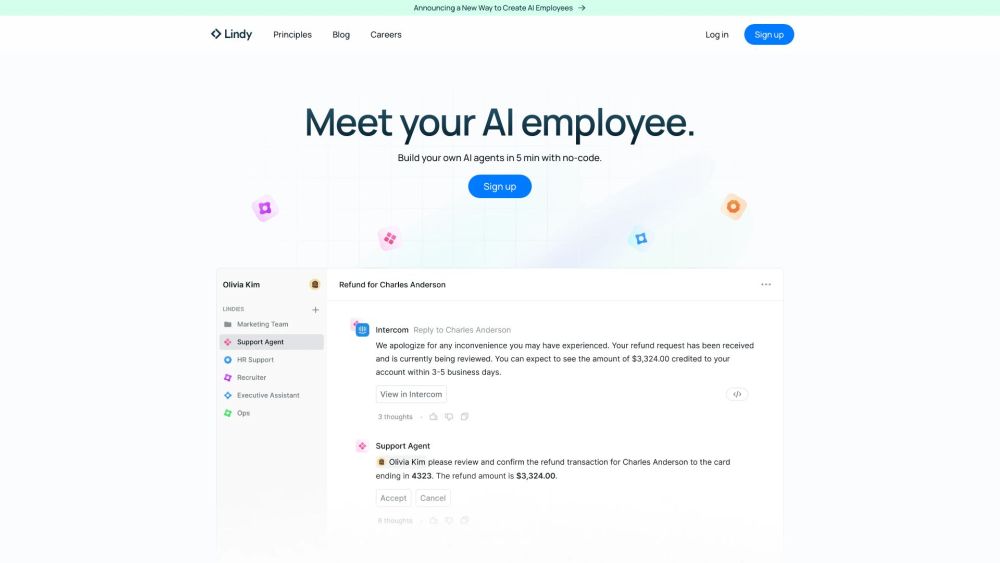“I hope you understand this isn't a concert,” stated Jensen Huang, Nvidia's president, addressing a capacity crowd at the SAP Center in San Jose. With this remark, he set the stage for what was essentially the antithesis of a concert: the company’s GTC event. “Welcome to a developers conference filled with in-depth discussions on algorithms, computer architecture, and mathematics. I can feel a palpable sense of seriousness in the room; it seems like you may have stumbled into the wrong event.”
While it might not have been a rock concert, the leather-jacket-clad 61-year-old CEO of the world's third-most-valuable company certainly attracted an audience of dedicated fans. Founded in 1993, Nvidia has continually aimed to push the boundaries of general computing. The term "accelerated computing" has become a cornerstone for the company: the goal is to create specialized chips and boards rather than offering general-purpose solutions. Nvidia's chips empower graphics-hungry gamers with the tools needed to enjoy games at higher resolutions, improved quality, and smoother frame rates.
Monday’s keynote was a return to Nvidia's founding vision. “I want to showcase the essence of Nvidia, where computer graphics, physics, and artificial intelligence converge,” Huang declared.
For the next two hours, Huang engaged in a deep dive into technical topics. Attendees expecting a polished presentation, akin to a Tim Cook keynote, would likely have found themselves underwhelmed. This keynote was packed with technical jargon and unabashedly focused on development.
The Need for Bigger GPUs
Graphics processing units (GPUs) are the foundation upon which Nvidia was built. If you've ever assembled a computer, you likely think of a graphics card residing in a PCI slot—this marks the company's humble beginnings, but much has evolved since then.
Nvidia unveiled its groundbreaking Blackwell platform, described by Huang as an “absolute powerhouse.” He noted that the core processor of Blackwell is “pushing the limits of physics on chip size,” achieving speeds of up to 10 Tbps by combining the power of two chips.
“I’m holding about $10 billion worth of equipment here,” Huang explained as he showcased a Blackwell prototype. “The next version will cost $5 billion, but fortunately, the costs will decrease beyond that.” When grouped together, these chips can deliver extraordinary performance.
The previous generation of AI-optimized GPUs, known as Hopper, has now been surpassed by Blackwell, which can be between 2 and 30 times faster, depending on the measurement used. Huang detailed the resource demands for creating the GPT-MoE-1.8T model, which required 8,000 GPUs, 15 megawatts of power, and 90 days. With Blackwell, the model could be created using just 2,000 GPUs and only 25% of the energy.
These GPUs are capable of handling immense data volumes, leading Huang to his next topic of discussion.
What’s Next?
Nvidia announced a suite of tools aimed specifically at the automotive sector, focusing on self-driving technology. The company has solidified its position in robotics but has now intensified its efforts to enhance robotic intelligence.
Huang emphasized the concept of an “AI factory” instead of a traditional data center, stating, “A new Industrial Revolution is unfolding in these server rooms: I call them AI factories.”
Additionally, Nvidia introduced Nvidia NIM, a software platform designed to streamline AI model deployment. This platform utilizes Nvidia's hardware as a foundation and intends to accelerate AI initiatives by providing a framework of AI-ready containers. NIM supports various models from sources like Google and Hugging Face while integrating with platforms such as Amazon SageMaker and Microsoft Azure AI. Over time, NIM will expand its features, including capabilities for generative AI chatbots.
“Anything that can be digitized can be structured in a way that enables pattern learning,” Huang explained. “Once we learn these patterns, we can grasp their meanings. With an understanding of meaning, we can also generate new content. And here we are, at the forefront of the generative AI revolution.”





